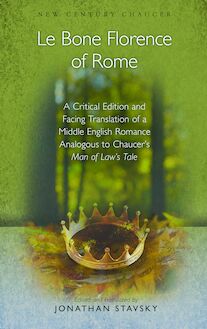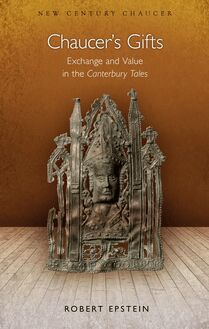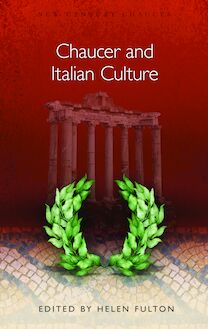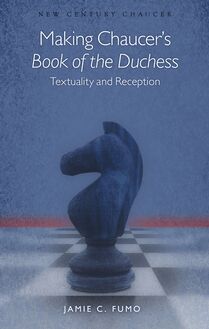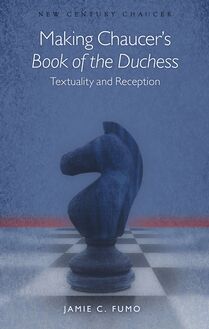-
 Univers
Univers
-
 Ebooks
Ebooks
-
 Livres audio
Livres audio
-
 Presse
Presse
-
 Podcasts
Podcasts
-
 BD
BD
-
 Documents
Documents
-
- Cours
- Révisions
- Ressources pédagogiques
- Sciences de l’éducation
- Manuels scolaires
- Langues
- Travaux de classe
- Annales de BEP
- Etudes supérieures
- Maternelle et primaire
- Fiches de lecture
- Orientation scolaire
- Méthodologie
- Corrigés de devoir
- Annales d’examens et concours
- Annales du bac
- Annales du brevet
- Rapports de stage
La lecture à portée de main
Découvre YouScribe en t'inscrivant gratuitement
Je m'inscrisDécouvre YouScribe en t'inscrivant gratuitement
Je m'inscrisEn savoir plus
En savoir plus

Description
Chaucerian scholarship has long been intrigued by the nature and consequences of Chaucer’s exposure to Italian culture during his professional visits to Italy in the 1370s. In this volume, leading scholars take a new and more holistic view of Chaucer’s engagement with Italian cultural practice, moving beyond the traditional ‘sources and analogues’ approach to reveal the varied strands of Italian literature, art, politics and intellectual life that permeate Chaucer’s work. Each chapter examines from different angles links between Chaucerian texts and Italian intellectual models, including poetics, chorography, visual art, classicism, diplomacy and prophecy. Echoes of Petrarch, Dante and Boccaccio reverberate throughout the book, across a rich and diverse landscape of Italian cultural legacies. Together, the chapters cover a wide range of theory and reference, while sharing a united understanding of the rich impact of Italian culture on Chaucer’s narrative art.
Contributors
Introduction: Chaucer Imagines Italy - Helen Fulton
1. Chaucerian Diplomacy - William Rossiter
2. The Haunting of Geoffrey Chaucer: Dante, Boccaccio, and the Ghostly Poetics of the Trecento - James Robinson
3. Chorography and Topography: Italian Models and Chaucerian Strategies - Helen Fulton
4. Vision and Touch in Dante and Chaucer - Robert S. Sturges
5. The Aesthetics of ‘Wawes Grene’: Planets, Painting, and Politics in Chaucer’s Knight’s Tale - Andrew James Johnston
6. The Prophetic Eagle in Italy, England, and Wales: Dante, Chaucer, and Insular Political Poetry - Victoria Flood
7. ‘Trophee’ and Triumph in the Monk’s Tale - Leah Schwebel
8. From Imitation to Invention: Chaucer’s Journey from House of Fame to the Nun’s Priest’s Tale - Teresa A. Kennedy
Bibliography
Index
Sujets
Informations
| Publié par | University of Wales Press |
| Date de parution | 15 janvier 2021 |
| Nombre de lectures | 0 |
| EAN13 | 9781786836793 |
| Langue | English |
| Poids de l'ouvrage | 3 Mo |
Informations légales : prix de location à la page 0,4400€. Cette information est donnée uniquement à titre indicatif conformément à la législation en vigueur.
Extrait
-
 Univers
Univers
-
 Ebooks
Ebooks
-
 Livres audio
Livres audio
-
 Presse
Presse
-
 Podcasts
Podcasts
-
 BD
BD
-
 Documents
Documents
-
Jeunesse
-
Littérature
-
Ressources professionnelles
-
Santé et bien-être
-
Savoirs
-
Education
-
Loisirs et hobbies
-
Art, musique et cinéma
-
Actualité et débat de société
-
Jeunesse
-
Littérature
-
Ressources professionnelles
-
Santé et bien-être
-
Savoirs
-
Education
-
Loisirs et hobbies
-
Art, musique et cinéma
-
Actualité et débat de société
-
Actualités
-
Lifestyle
-
Presse jeunesse
-
Presse professionnelle
-
Pratique
-
Presse sportive
-
Presse internationale
-
Culture & Médias
-
Action et Aventures
-
Science-fiction et Fantasy
-
Société
-
Jeunesse
-
Littérature
-
Ressources professionnelles
-
Santé et bien-être
-
Savoirs
-
Education
-
Loisirs et hobbies
-
Art, musique et cinéma
-
Actualité et débat de société
- Cours
- Révisions
- Ressources pédagogiques
- Sciences de l’éducation
- Manuels scolaires
- Langues
- Travaux de classe
- Annales de BEP
- Etudes supérieures
- Maternelle et primaire
- Fiches de lecture
- Orientation scolaire
- Méthodologie
- Corrigés de devoir
- Annales d’examens et concours
- Annales du bac
- Annales du brevet
- Rapports de stage
